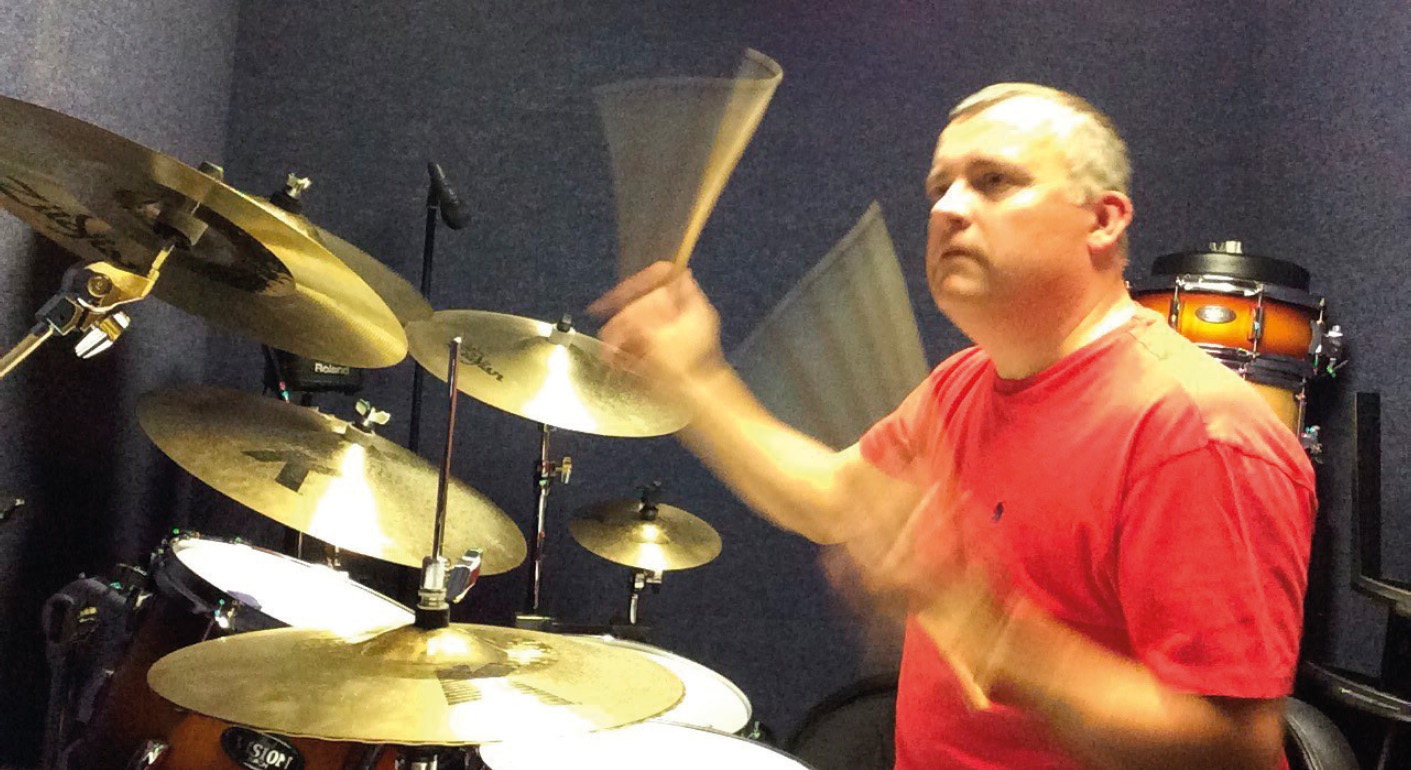
As a drummer, I fall into a trap of neglecting my sight-reading and just ‘feeling it’, preferring to handle no more than a five-piece kit and some cymbals, to be on top of my tempo and rudiments. With tuned percussion, one must navigate pitch, scales and clefs over drum notation – my mind boggles at the thought of becoming a ‘doubler’ as Lauren Kosty, percussionist and drummer for Russell Watson, terms the tuned percussionist.
Kosty speaks to the complexities of playing tuned percussion in a big band setting or orchestral pit: ‘It can be fundamentally tricky. As tuned percussionists we're training our sight, our peripheral vision. We're trying to line read while looking at the page, away from our hands, away from the keys, to the conductor – our eyes have to be in several places at once. It's a full-body instrument.’
While it can initially seem so complicated, Glenn Clarke, founder of GRC Percussion, says: ‘Tuned percussion is a way of diversifying play, not a means of limiting. A percussionist is not just reading one clef during a performance – you're reading treble clef for xylophone, glockenspiel and so on, bass clef for timpani, and drum clef alongside that. As a percussion teacher, you must be able to teach all three.’
So, how can teachers assist nervous drumming students to overcome that initial fear of applying the tuned note to percussion – of balancing this double act of rhythm and tune?
Teaching tuned
Kosty approaches teaching tuned as soon as possible, to avoid it becoming ‘the other thing’: ‘Most students want drum lessons when they approach me. I try to expose them to other percussion. This prevents tuned from becoming intimidating – a student can excel at drumming, but stay in that comfort zone. I want them to develop a modicum of proficiency, to start with a snare and drum set to lock in rhythms before moving on, so that tuned is just another thing they do, rather than a separate aspect.’
When approaching students, Clarke says: ‘Lessons need to be made simple and accessible: interesting, without busyness. We adapt to the person in front of us. Music, to a lot of people, is a different language – it can look as if a spider has run ink across the page.’ This speaks to that initial scare of opening even drumming notation, the various marks across the staves instantly intimidating.
A tuned percussion teacher should start tonally, suggests Kosty, or by associating pitch with colour: ‘Give them coloured Boomwhackers and play in the diatonic scale. Take a song – ‘London Bridge is Falling Down’ – write it out in colours, without pitch, and show them that C is played with the red Boomwhacker. Introduce a note or two at a time and encourage singing. This way, we connect hearing the note in their mind and playing – we make them go through the process of sight-singing. Eventually, we can transition this to a stave, and I transcribe the note heads in colour on Sibelius.’
Clarke offers an illustrative example of his syllabus: ‘I put together lessons around topics such as Morse code when they were studying the sea. Students spelled the name of their school in Morse code, which we then turned into a tune using tuned percussion. They learned how to create rhythm, to perform, tell a story, and enhanced their subject study.’ Both percussionists say that it is worth bearing in mind that the limitations of the classroom can be exacerbated by the kit available. Be prepared to improvise and keep lesson structures simple.
Preparation
There are a variety of good books and starter kits to introduce young percussionists to tuned percussion. Clarke publishes a range of books under the GRC Percussion banner that offer tuned percussion note board charts for ensemble, notably ‘The A-Z of Glockenspiel and Xylophone’ for beginner-level study of tuned. The series offers a diverse repertoire for study, from American marching band and Grade 8 and above. Kosty uses a number of books: Garwood Whaley's ‘Fundamental Studies for Mallets’, which introduces études and pieces by key; Dale Anderson's ‘Well Tempered Mallet Studies’, as it offers progressive reading – rhythmically interesting for those already comfortable in percussion by expanding melody and key; and George Hamilton Green's ‘Xyplophone Rags’ for its initially accessible tonal music.
Keeping students active in their practice can become a further challenge on top of getting to grips with tuned technique. ‘Most don't have tuned to practise on at home,’ Kosty warns, ‘so drum rudiments are key. Focus initially on the drum set and then encourage them to rent a xylophone, or practice at school.’ Regarding practice, Kosty asserts a teacher should shape students’ early experiences through the music available to them. ‘School band, percussion community group – what we expose them to is the entry point. We should be broader and match them case by case. Assess what opportunities the student has or can access and get to know what they enjoy and teach towards that.’ She adds: ‘If a student is seeking to find a sense of self, music is great way to define that.’
Clarke reinforces this need for encouragement with his own experience: ‘Growing up with dyslexia, I was rarely noticed or seen in school. I sat at the back and was known as one of the naughty students. Percussion was vital to bringing myself out and becoming the person and musician – and teacher – I am today.’

Glenn Clarke: ‘You've got to realise you're teaching your hobby, to teach with how much you love to play’ © GLENN CLARKE

Lauren Kosty: ‘I always aim to be a performer and educator – and continuing to play professionally is vital to CPD’ © KENNETH PFEIFER PHOTOGRAPHY
Teach by doing
In terms of qualifications, there are many routes for the tuned percussion teacher to take, with no single right way. Clarke's experience came from his time in the army: ‘I had no academic qualifications, but I knew all the different aspects of drumming and all styles of percussion. My qualifications are from the Army's Royal Military School of Music, but knowing how to lead a band has been crucial. Teaching require a backbone of experience in the field as a musician.’
Kosty, an alumnus of USC Thornton School of Music, says: ‘I learned all aspects of percussion: orchestral, contemporary, jazz and so on. I branched out even further on to an MA. I eventually moved to London and developed an interest in teaching, which led to me carrying out a teaching course on the Orff Approach. In terms of CPD, I'm always on the lookout for an immersive weekend course on xylophone or something, just to refine my approach. But I always aim to be a performer and educator – and continuing to play professionally is vital to CPD.’
Indeed, both emphasise that teaching percussion requires professional experience, with Kosty saying: ‘It inspires the students to turn on the EMA Awards and see me playing.’
This is reinforced by Clarke: ‘You have to be able to do what you preach. An employer will want an all-round percussionist – someone to teach kit, samba band, hand percussion, all styles. If you're teaching someone in a way so that they can see you're a professional, you are teaching them attainability. My job is also my hobby, the thing I love - you've got to realise you're teaching your hobby, to teach with how much you love to play.’
A contemporary tuned percussion teacher should balance the professional experience with the academic side, without losing touch with the magic of percussion.
‘I want students to figure out how to be self-motivated,’ says Kosty, ‘to not force or guilt-trip but encourage. If I show excitement and enthusiasm, inspire through positivity rather than a list of tasks – I can help them realise their capabilities.’
Antosh Wojcik is a poet, performer and lecturer of poetry and creative writing at University of Winchester. Penned in the Margins is producing his cross-arts drumming and poetry show about memory, ‘How To Keep Time: A Drum Solo for Dementia’.
More information about Lauren Kosty and Glenn Clarke can be found at their websites: www.laurenkosty.com; www.stickbagbuddy.co.uk




